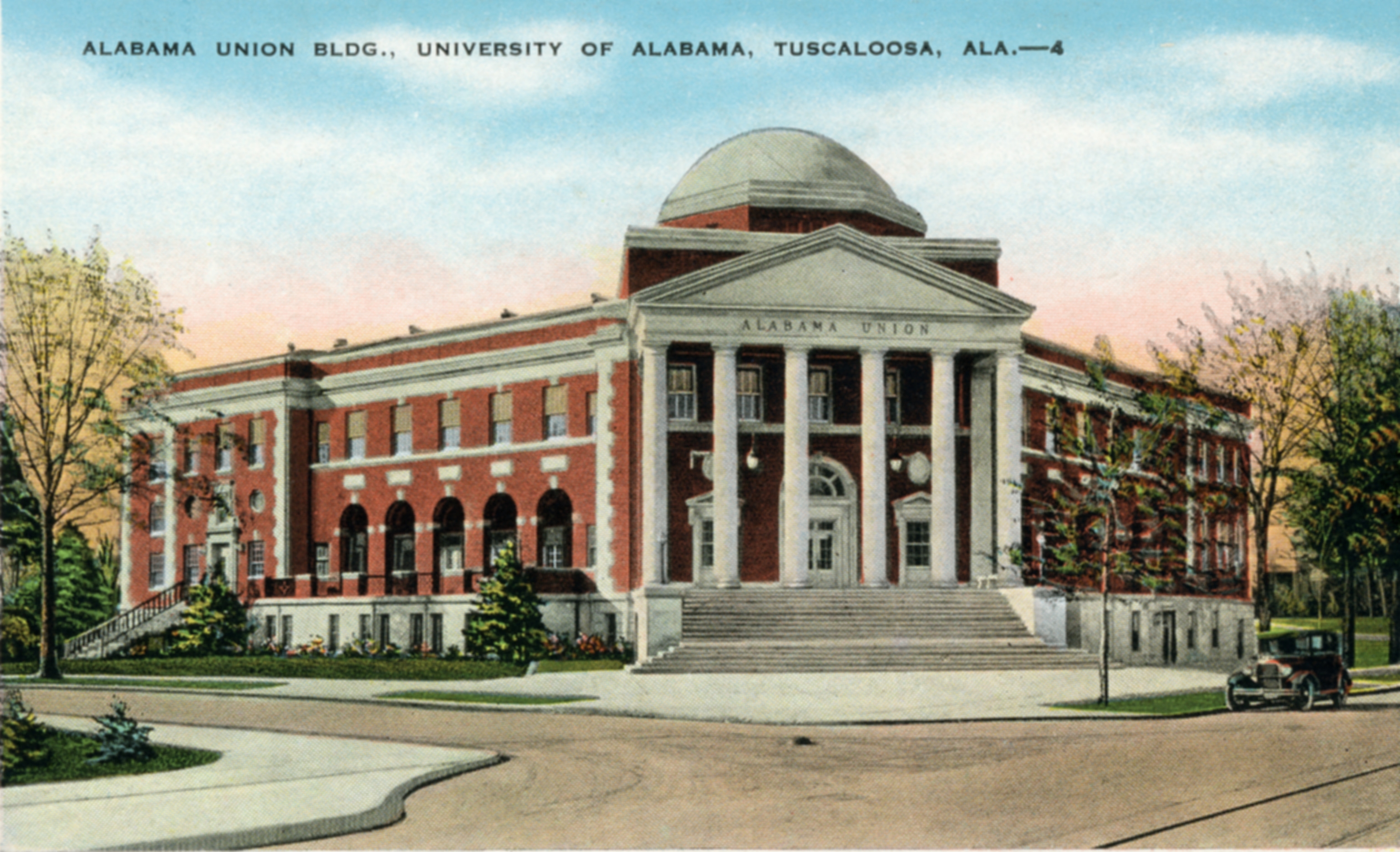1925-2016 TIMELINE OF
RADIO, TV, FILM, & JOURNALISM AT
THE UNIVERSITY OF ALABAMA
For more on the early years of radio and TV at the University of Alabama, see professor Richard Hartsook’s A History of the Department of Radio and Television of the University of Alabama (1955) and professor Keith Barze’s history of radio at UA (1996).
For more on the history of the College, please see the The College of Communication & Information Sciences: A History, compiled by professor Bruce Roche in 1999.
- 1925 A journalism course was taught under the auspices of the Department of English.
- 1926 The Department of Journalism was formed.
- 1928-35 Clarence Cason served as Journalism chair. Read a biography of Cason and his time at UA, by Bailey Thomson.
- 1930-31 school year. Journalism was first offered as a major.
- 1935-46 A. Phillips Beedon served as Journalism chair.
- Fall 1940 The Department of Radio Arts was established in College of Arts and Sciences and offered its first courses. The first chair was John Carlile.
- 1941 The Department of Radio Arts began operating an AM radio station, the Bama Radio Network (BRN).
- 1943 Carlile departed for active military duty. The Department continued during World War II under acting chairs.
- 1945 Upon return, Carlile was offered his former job as chair, but he didn’t accept because the Radio Arts Department had been split from the Extension division’s radio production activities. Leo Martin was hired.
- 1945-51 Martin built the department and changed name, in 1947, to Department of Radio.
- 1947 The Department’s AM radio station changed name to WABP.
- 1950 The Radio Department’s name was changed to the Department of Radio and Television Arts; M.A. programs were started in RTA and JN.
- 1951 Martin left for Boston University. Ken Harwood, the RTA Department’s first PhD faculty member, was appointed as chair.
- 1952 The RTA Department’s name was shortened to the Radio-Television Department.
- 1954 Harwood was appointed chair at USC. Ted Nelson became acting head of the Radio-Television Department and served until 1956.
- 1956-1963 Don Dixon served as chair of the Radio-Television Department.
- 1963-1982 W. Knox Hagood served as chair of the Radio-Television Department.
- 1966 The Radio-Television Department’s name was changed to Broadcast and Film Communication (BFC) to reflect the inclusion of film studies.
- 1966-74 William Winter served as Journalism chair.
- 1972 The FCC granted a license to the BFC Department to operate a 10-watt FM radio station, WUAL, thus replacing WABP.
- July 1, 1973 The BFC and Journalism Departments combined to form the School of Public Communications—housed in Carmichael Hall and the Alabama Union Building. The name was soon changed to School of Communication. Later, the Departments of Advertising and Public Relations (1974) and Speech Communication (1980) joined the School.

- 1974 (March-May) Frank Deaver served as Journalism chair.
- 1974-81 Charles Arrendell served as Journalism chair.
- 1981-85 Charles Self served as Journalism chair.
- 1981 Student-run WUAL-FM changed its call letters to WVUA-FM so that the University could establish an NPR station with that name.
- 1982-1983 The Old Union Building was extensively renovated. TCF and JN’s faculty offices were consolidated on the fourth floor.
- 1982-1988 James Brown served as chair of BFC; Hagood returned to teaching.
- 1985-87 David Sloan served as acting Journalism chair.
- 1987-91 Jay Black served as Journalism chair.
- 1987 Jennings Bryant joined the BFC faculty as holder of the Ronald Reagan Endowed Chair in Broadcasting and first director of the School’s Institute for Communication Research.
- 1988 The School of Communication was renamed the College of Communication.
- 1988 (?) The Old Union building became the Communication Building.
- 1988-89 Ray Carroll served as interim BFC chair.
- 1989 Loy Singleton was appointed BFC chair; BFC became the Telecommunication and Film Department (TCF). Singleton served as the chair of TCF until 2006.
- 1990-1991 The Annex of the Communication building was extensively renovated—creating new classrooms and other facilities.
- 1991 JN and TCF’s home building was renamed Reese Phifer Hall—having originally been built in 1930 as the Alabama Union (the student union building).
- 1990-91 TCF’s 50th anniversary celebrated.
- 1991-92 Edward Mullins served as acting Journalism chair.
- 1992-96 Paul Delaney served as Journalism chair.
- 1996-2004 Edward Mullins served as Journalism chair.
- 1996 Sandra Braman hired as TCF’s first Reese Phifer Professor.
- 1997 The School of Library and Information Studies merged with the College, which then changed its name to the College of Communication and Information Sciences.
- 2004-06 Cully Clark served as acting Journalism chair.
- 2006 Loy Singleton became Dean of the College and served as acting Journalism chair.
- 2006-2011 Gary Copeland served as TCF chair.
- 2007-2013 Jennifer Greer served as Journalism chair.
- 2011-2014 Glenda Williams served as TCF chair.
- 2011 Andrew Billings was appointed to the Reagan Chair in TCF.
- 2013-2016 Wilson Lowrey served as acting JN chair.
- 2014-2016 William Evans served as acting TCF chair.
- 2014 The Digital Media Center was opened—housing WVUA-TV, Alabama Public Radio, the Center for Public Television and Radio (CPT&R). TCF and JN students often intern in the facility and some TCF/JN courses are taught there.
- 2016 TCF merged with the Journalism Department to become the Department of Journalism and Creative Media.
- 2016 Cory Armstrong was appointed JCM chair.